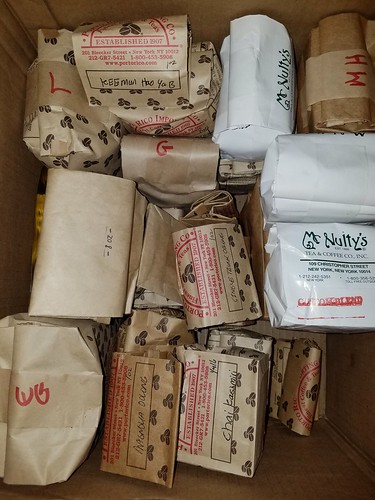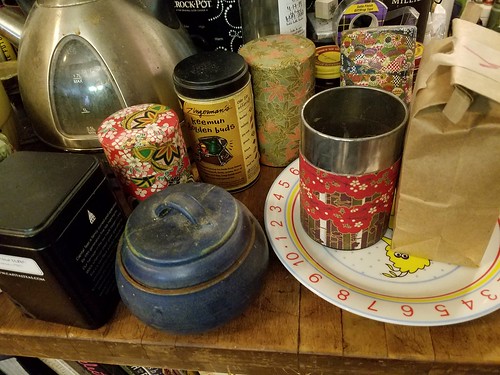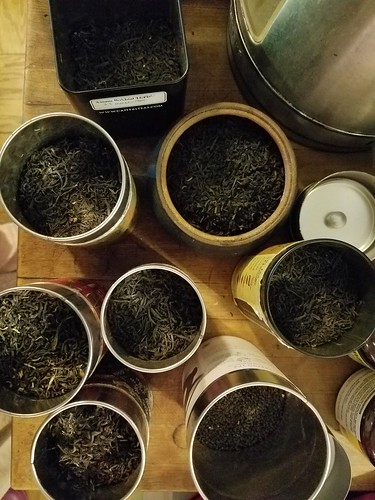Every year, in late February or early March, I place an order for a year’s worth of tea from a shop in New York City. I usually order somewhere around 8 pounds of tea across 10-12 types, but it varies, depending on what we’ve been drinking and what my tea supplier has in stock.

By January, I’m usually out of one or two kinds, but as you can see here, I’m still going strong, although I can see which teas I’m likely to be cutting it close on. (We bought a couple additional pounds during trips to New York City during 2018, so I’ll need to up my order for at least two kinds this winter.) And finishing up one or two types forces me to drink things I like, but like less than my normal six varieties.
I now know, for instance, that I need two pounds of Irish Breakfast tea to make it through the year. Keemun, which is the base for English Breakfast, was my go-to for a while, but a couple years ago there must have been a problem with the supply because the cost for the leaves went way up, and the English Breakfast blend is good, but not as good. Did you know that while English Breakfast tea is generally made from Chinese tea leaves, Irish Breakfast tea nowadays is a blend of two Indian varieties — Assam and Ceylon?

In case you’re wondering, the family go-to’s, in addition to our two breakfast blends, are Ceylon (if you buy the Ceylon from Porto Rico, skip the cheaper Ceylon OP for the Ceylon Kenilworth Garden (the name of the estate where it’s grown), because it’s a superior tea), Assam, and Yunnan. We also drink a lot of Earl Grey (my supplier makes a very nice version that has just the right amount of bergamot) and, depending on the mood, smokey Lapsang Souchong (that’s what’s in the ceramic jar) and Gurance, a citrusy Nepalese tea. We have a couple more in our rotation, including Java Santosa (an Indonesian black tea), Golden Kenyan (anything with golden in the name tends to mean it’s a less dark hues), and a custom blend from our second go-to tea shop in Greenwich Village (that has been in business since the late 1800s) that they say is the three-tea blend they made for Katherine Hepburn when she was alive.

I also have a large collection of Darjeelings, but Rudi and I have gone off them a bit in the last couple years (tea quality varies from year to year depending on the growing season and the drying process. I just hit a year that I didn’t love so much and can’t seem to force myself to drink it so I can buy a different year’s blend). They have the most number of grades you can buy, meaning you can pick your tea based on how big the leaves were before they started roasting them. In general, the more letters that appear when describing your Darjeeling, the better the tea. Nearly all the classifications (other than the lowest one, “D” for “dust”) end in “OP” which stands for Orange Pekoe. Orange Pekoe actually means tea leaf buds when used by tea growers, but the term seems to stand in for generic black tea when used by tea bag manufacturers these days.
Feel free to stop by for a cuppa!